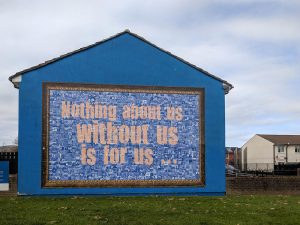
I recently got a call from an organization that was facing a lot of conflict and change. Staff were leaving the nonprofit due to board micromanagement; at the same time, the group had lost a key funder, and it was becoming clear that the organization might need to sunset its operations. The board asked me to do a board training…and asked that it be three hours or less.
I’ve seen this before, and as a board member, I understand the appeal of the ask: In the face of complex issues, we want a quick fix. Without stating it, what the nonprofit’s leaders were asking for was a technical solution to an adaptive problem. In reality, what’s almost always needed for organizational change are both technical and adaptive solutions.
Technical Problems vs. Adaptive Challenges
In their book The Practice of Adaptive Leadership, Ronald Heifetz, Marty Linsky, and Alexander Grashow offer good definitions of technical versus adaptive problems. Technical problems are those for which we have “known solutions that can be implemented by current know-how.” Technical solutions are readily available because others have traveled the path before. Board governance technical solutions could include new policies, orientation, processes, education, or a new committee. For example, Propel Nonprofits’ board profile matrix is a good technical tool to evaluate your board composition.
The authors define adaptive problems, on the other hand, as those which “can only be addressed through changes in people’s priorities, beliefs, habits, and loyalties.” Adaptive problems are difficult to identify—or, sometimes, they are the easily identifiable elephant in the room. What’s required of us in facing those challenges are individuals and groups practicing courage, change, and experimentation.
Hard but Necessary
Adaptive solutions can be harder to adopt because they can be personal or require intentional collective group process to navigate loss or uncertainty. For example, after completing the board profile matrix, maybe there’s a realization that the strategic direction of the nonprofit calls for a general shift in board composition to onboard more people with a stronger strategy skillset or lived experience from the community being served. Or, in the case of the above example, maybe the discussion regarding governance policies (technical solution) results in breakthrough understandings from board members about how to alter their behaviors to have better boundaries with new staff (adaptive).
Sign up for our free newsletters
Subscribe to NPQ's newsletters to have our top stories delivered directly to your inbox.
By signing up, you agree to our privacy policy and terms of use, and to receive messages from NPQ and our partners.
Both technical and adaptive solutions have merit; I’d never argue for one over the other. When facing a challenge like climbing a rock face, you need to have the right equipment. However, you can’t have enough carabiners or rope to deal with a mountain lion greeting you as you reach the next ledge. That’s an adaptive challenge that requires courage and course correction, rather than any equipment you can buy at REI.
Adaptive solutions are often ignored or avoided. Sometimes, it’s because they require a change in values or beliefs. (“We are the only ones who can do this work effectively.”) Other times, it’s because they’re messy, involving multiple players and sometimes spanning staff silos or staff and board roles. (“You mean I have to change my relationship with the executive director?”) But without planful adoption of adaptive solutions, technical solutions risk falling flat. What good is a self-reported board profile matrix if the process fails to consider what the organization needs from the board, or fails to work on cultural shifts needed to enrich the board’s performance once newcomers join?
I want to urge boards and nonprofit leaders to thoughtfully plan for adaptive solutions even if they’re hard to name or messier to approach. This is juicy work that requires talented leaders like you. If we as nonprofit leaders constantly treat complex, adaptive challenges with only technical solutions, our ability to carry out our mission suffers. For boards of directors to genuinely develop to meet changing needs, we need to change as individual leaders, change as governing groups, and pair technical solutions with adaptive ones.
This article was published in its original form at the Propel Nonprofits blog.










